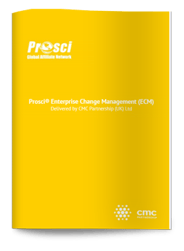
In most mature industries, competing firms constantly act to outchange and differentiate one another in order to gain marginal competitive advantage. To outperform competitors firms usually have to find a positioning that will provide them with either a competitive advantage in cost or differentation. Companies that have sustainable competitive advantage to win consistently (and achieve above average profitability) are few and far between. The best performing companies are able to effectively align their strategy with the organisation's mission (its long-term purpose) and its resources (what the organisation has that makes it good enough to win: structures, people, processes, cultures etc.) and capabilities (what the organisation needs to be good at to win).

Typically, multiple different individuals and groups are tasked to oversee different parts of the value chain that constitutes the core capabilities of the company. However, such an arrangement tends to create silos which can hinder the organisation from achieving its strategic objectives because individual managers are incentivised to seek and protect their own portfolios rather than collaborate with peers to resolve problems, synchronise efforts and enhance processes. Such systemic effects create inaction and inhibits well-resourced strategic projects from achieving their intended outcomes, ultimately leading the organisation into an uncompetitive position.
Oxford University Associate Professor Jonathan Trevor suggested that achieving strategic alignment requires a special breed of leadership called enterprise leadership that concerns itself with the mobilisation of entire company resources as a system of interconnected moving components focused on the development of strategically vital capabilities. The enterprise leader serves to envision and communicate the strategic alignment in meaningful and tangible ways to others while simultaneously designing each component of the value chain to be complementary with one another and supportive of the company's mission.

From our extensive work experience in helping many organisations build enterprise change capabilities to achieve their strategic goals, we observe that it is also important for leaders to be able to mobilise their people to adopt the strategic changes. Organisations at its core do not change, it is the people within that will bring about the successful adoption of new changes. New IT systems, business process reengineering, agile frameworks will not work independently of people.
Without having a structured and intentional approach to manage the people-side of change at an enterprise level, leaders cannot prepare and equip people to adopt the changes required to achieve the strategic alignment. Also, if they are not able to measure the individual transitions required for the transformation, how would they know when the alignment has been achieved?

While there is no universal business strategy or organisational design that can ensure superior competitive advantage, there are robust and comprehensive frameworks designed to manage change better for people in order to achieve intended business outcomes. As leaders gather to rethink strategy, they should also think about change management constantly for their strategy will only be as good as their change management maturity.
Interested to build Enterprise Change Management capability for your organisation?
If you are looking to further your Change Management capabilities, learn more about our Enterprise Change Management Bootcamp with our workshop brochure or register for the workshop below.
 |



